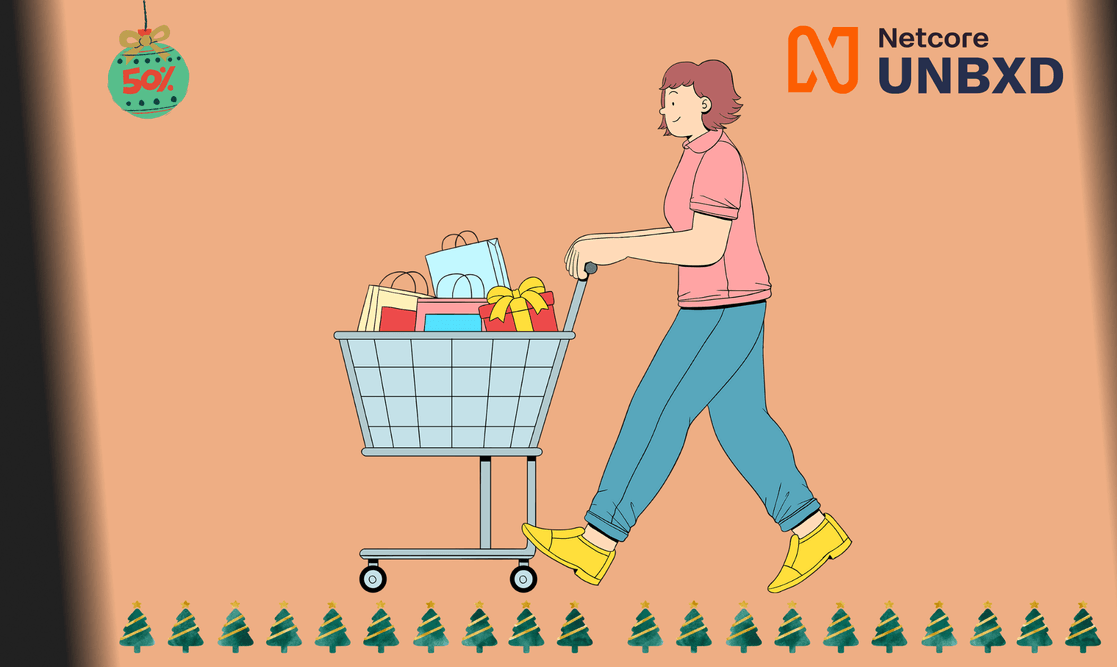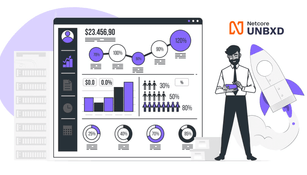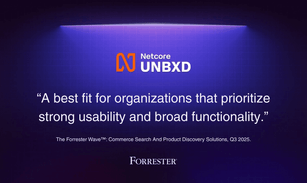- ProductsSearch and BrowseRecommendationsCustomer Engagement



Winning BFCM: The power of early preparation in 2025
Black Friday and Cyber Monday (BFCM) remain the most significant milestones on the retail calendar, condensing billions of dollars in sales into just a few high-stakes days.
Yet the rules of holiday shopping are constantly shifting. Shoppers now start earlier, pay closer attention to value, and move seamlessly across devices and channels on their path to purchase. For ecommerce retailers, the challenge is clear: making the right products visible at the right moment to convert shoppers’ intent into sales.
This year, the weeks leading up to BFCM carry even greater weight. For ecommerce retailers, success is no longer about launching discounts on Friday morning—it’s about anticipating shopper intent weeks before the rush and making the right products discoverable at the right time. By the time deals go live, competition for attention is already fierce.
In the sections below, we unpack the 6 key pre-holiday trends influencing shopping behavior and what they mean for ecommerce teams preparing for the busiest season of the year.
Shoppers are starting earlier
The traditional model of “wait until Friday morning” has eroded. Increasingly, shoppers begin browsing, comparing, and creating wishlists weeks before the first deals drop.
Accenture’s 2024 holiday shopping report revealed that four in ten consumers completed their holiday shopping plans by early November through early December. This year, that timeline is set to accelerate, especially for Gen Z and millennials who treat early browsing as part of the holiday experience.
How this transforms product discovery?
Treat early browsing as intent, not noise: Pre-holiday traffic offers a preview of shopper demand and what they like. Avoid treating those as wasted clicks.
Optimize quick discovery for pre-sale items: Highlight “coming soon” or early-access products so shoppers can express interest before deals go live.
Capture intent signals: Track wishlist additions, search queries, and browsing patterns to provide personalized recommendations on BFCM day.
Fuel personalization in advance: Train your AI models to use pre-holiday data to tailor promotions and recommendations when peak traffic arrives.
Be ready before the weekend: By the time BFCM begins, your system should already anticipate what a large share of visitors wants.
Gain your competitive edge: Many retailers now run “VIP Early Access” campaigns weeks in advance. If you’re not surfacing early-bird products, you’re invisible during the decision-making stage.
Omnichannel and mobile-first behavior
In recent BFCM cycles, mobile devices have become the dominant channel. 2024 Cyber Week results from Salesforce show that over 70% of BFCM traffic in 2024 came from mobile, and mobile conversions are now within a few percentage points of desktop. Shoppers are also blending physical and digital touchpoints, checking availability online before heading to a store, or scanning QR codes in-store that redirect to personalized product recommendations.
What this means for product discovery:
Prioritize mobile-first discovery: Shoppers expect seamless product exploration on mobile devices.
Enable predictive search and autocomplete: Accelerate the discovery of the right product with responsive, intelligent search to help shoppers find what they love.
Streamline filters for mobile: Design simple, intuitive filtering that works smoothly on handheld devices to help shoppers share their preferences.
Optimize product carousels: Make browsing effortless with swipe-friendly layouts that enhance user experience.
Design for thumb-scrolling: Place recommendations where they align with natural scrolling behavior.
Simplify the purchase journey: A clean, optimized discovery flow prevents the drop-offs typical of clunky mobile experiences.
Competitive edge: Retailers are driving a 4X uplift in conversions through seamless, automated cross-channel customer journeys.
The shift toward value-conscious shopping
Macroeconomic conditions are pushing consumers to be more deliberate with their holiday budgets. Inflation, fluctuating tariff rates, and general cost-consciousness mean that shoppers are not only looking for discounts but also for value in the broader sense—durability, bundled offers, and products that feel worth the spend.
What this means for product discovery:
Utilize intelligent merchandising: Tune search results and recommendation engines to highlight gift bundles, best-value products, and top-rated items within set price points.
Use innovative labeling strategies: Phrases like “Bestsellers under $50” or “Gift ideas under $100” reinforce value, even when discounts are modest.
Offer affordable alternatives: Surface “similar but lower-priced” options to capture shoppers who might otherwise abandon their carts.
Merchandise with creativity: Competitors are aggressively merchandising around “affordable luxury”—offering a premium feel without premium pricing.
Category trends and seasonality
BFCM has long been dominated by electronics, fashion, and home goods, but the product mix is diversifying. In 2024, wellness products, sustainable goods, and DIY/home improvement categories showed notable growth. Many of these items were discovered during the pre-holiday period, often through gift guides, curated collections, or personalized recommendations.
What this means for product discovery:
Apply seasonal tagging: Add holiday-specific metadata such as “giftable,” “stocking stuffer,” or “eco-friendly” to improve visibility for broad seasonal searches.
Adopt anticipatory merchandising: Spotlight emerging or niche categories before demand peaks to stand out from competitors focused only on bestsellers.
Curate themed landing pages: Create dedicated pages like “eco-conscious gifts” to engage growing shopper segments ahead of the BFCM rush.
Utilize social-first trends: Especially for Gen Z, social discovery drives interest in categories like wellness and self-care, for example, by creating a social-inspired collection or embedding UGC (User-Generated Content).
Leverage AI for a competitive edge: Leading retailers now auto-tag seasonal metadata with AI to ensure every relevant product surfaces in holiday searches.
Personalization as a competitive differentiator
Choice overload is real. During peak shopping days, the average shopper is exposed to hundreds of products in a short session, which can lead to decision paralysis rather than purchase. Personalized discovery is one of the most effective antidotes. According to a McKinsey study, personalization can deliver 5–15% revenue uplift and significantly improve customer lifetime value.
What this means for product discovery:
Mine pre-holiday engagement data: Capture search terms, browsing categories, and wishlist activity to fuel smarter recommendations and content placement.
Tailor experiences before BFCM: Ensure shoppers see suggestions aligned with their intent as peak traffic begins.
Differentiate by audience type:
-
First-time visitors: Highlight bestsellers and trending products to build confidence.
-
Returning customers: Recommend complementary items based on past purchases.
Keep discovery effortless: Focus on reducing cognitive load with intuitive, relevant product suggestions instead of overwhelming shoppers**.**
Understanding the pre-holiday trends is only the first step. Our BFCM Holiday Conversion Playbook takes you further, providing five proven, data-driven strategies that help retailers. Packed with practical tips, best practices, and pitfalls to avoid, the playbook serves as your perfect guide to converting holiday intent into measurable revenue—all in one resource.
Preparing for peak traffic
Even the most refined discovery experiences can collapse under technical strain if infrastructure is not ready. During BFCM, traffic spikes can reach multiples of normal daily load, and shoppers have little patience for delays. A laggy search function or a slow-loading recommendation carousel can result in thousands of dollars in lost revenue.
What this means for product discovery:
Stress-test discovery systems: Ensure search and recommendation engines can handle real-time queries at peak scale without latency.
Prioritize inventory sync: Keep product availability accurate to avoid shopper frustration with out-of-stock results.
Deliver a seamless flow: High-performance discovery builds trust, while friction at peak intent risks sending shoppers to competitors.
Competitive edge: Retailers using real-time personalization engines see not only higher conversion but also lower bounce rates during traffic spikes.
Trusted by Fishpools, Backcountry, and Restaurant Equippers to deliver peak-season performance
Netcore Unbxd is built for the scale and intensity of peak shopping moments. Its MACH(Microservices, API-first, Cloud-native, and Headless Commerce) architecture gives retailers the agility and resilience they need when traffic surges. Elastic infrastructure powered by Kubernetes delivers real-time auto-scaling, instant failover, and 60ms query latency, even under extreme demand.
The results speak for themselves. Fishpools lifted average order value by 51% and revenue by 20% with personalized discovery. Backcountry drove 9% higher revenue per session and 7% more conversions by tapping into Netcore Unbxd’s AI-powered search. And as Restaurant Equippers put it, “Within just a few days after launch, the transformation was evident. Our conversion outperformed our previous vendor exponentially.”
Recognized by Gartner® and Forrester™ for innovation and reliability, Netcore Unbxd has become the backbone of discovery-led growth for leading global retailers. For retailers preparing for BFCM and beyond, it combines future-proof technology with proven impact.
Conclusion
The pre-holiday period is where the groundwork for BFCM success is laid. Shoppers are browsing earlier, balancing budgets more carefully, and expecting mobile-first, personalized experiences. Retailers who prepare their product discovery systems in advance—capturing early signals, surfacing value, tagging seasonal products, and ensuring infrastructure resilience—will be in the best position to convert when the shopping surge arrives.
Product discovery is more than a search bar; it’s the digital storefront window that shapes every shopper’s first impression. In an increasingly crowded holiday market, the retailers who win are those who make finding the right products and offers effortless, fast, and relevant. This year, the most brilliant BFCM strategy begins before the discounts go live.


